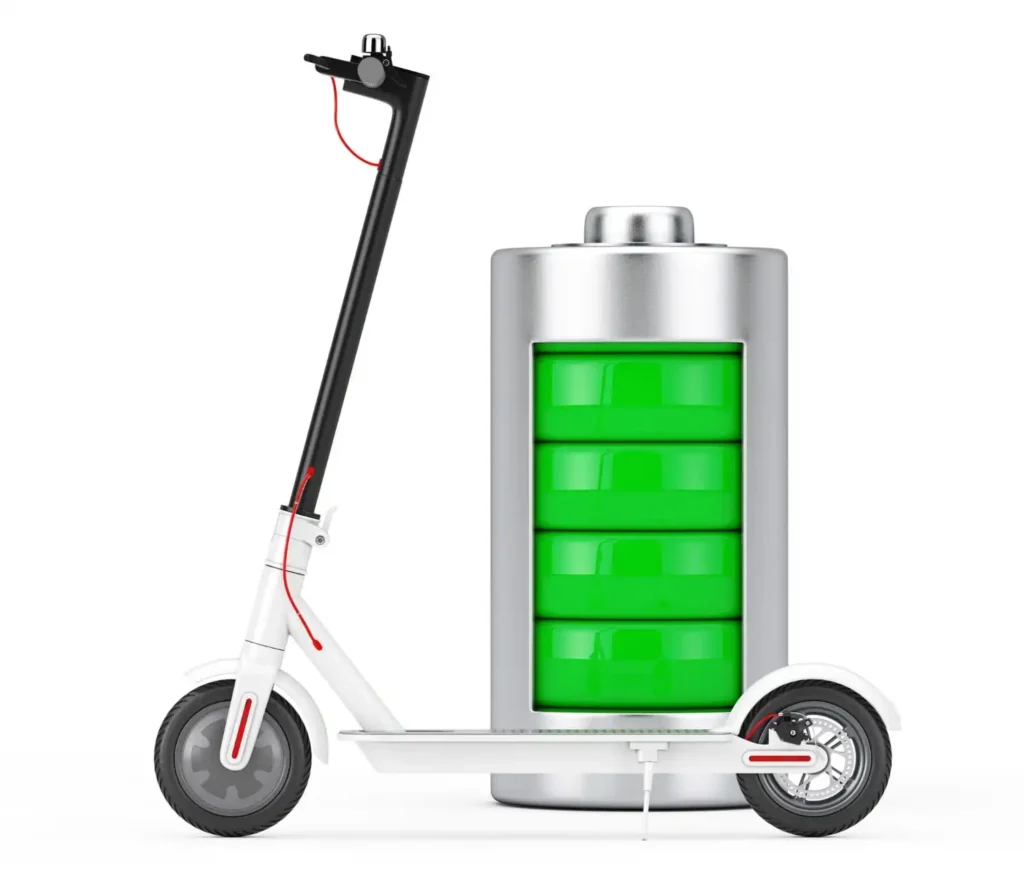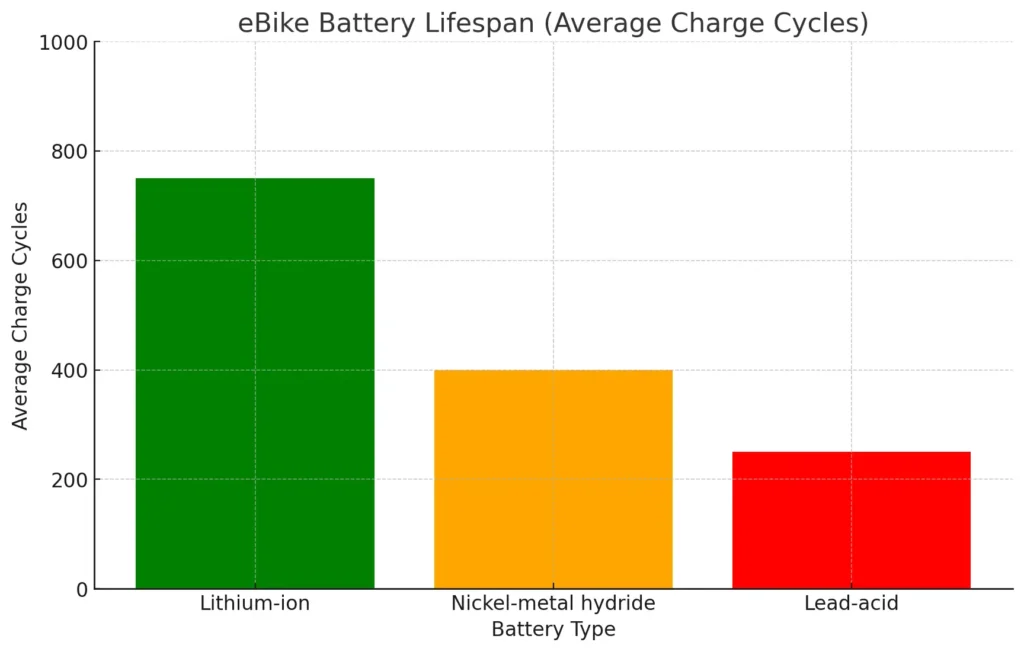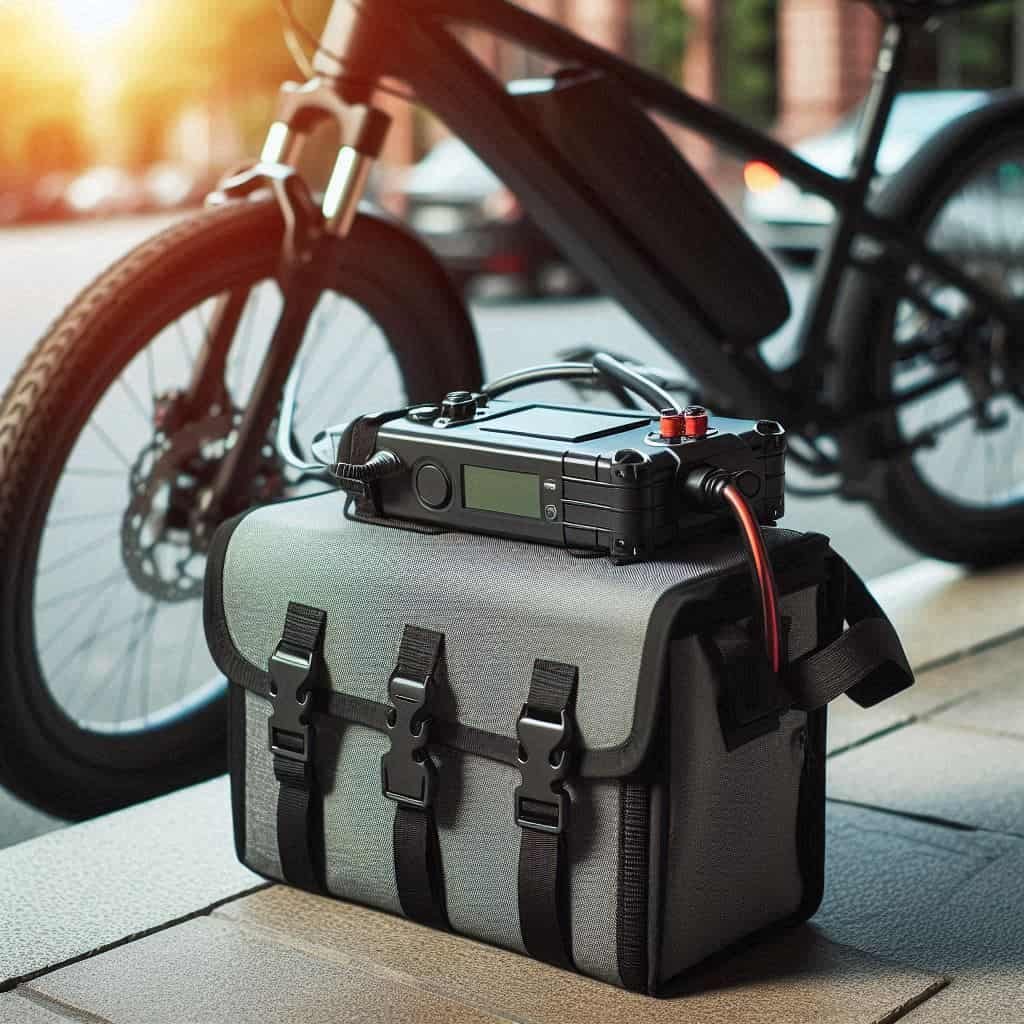
Introduction:
Battery is like the heart of an electric bike. So, you can surely ask this question: how long does an ebike battery last? The question, however, has two dimensions. First, how long does an ebike battery charge last? This actually translates to how many miles the battery gives per charge. Second, how long does a battery last on an ebike before it’s time for disposal? This essentially means how many charging cycles the battery can offer during its lifetime. In this article of tips & tricks, we will answer these questions, and look at the several elements influencing battery life, the average longevity, and offer advice on how to maximize it.
Factors Influencing the Question: How Long Does an EBike Battery Last:
A battery is basically a storage of energy. The amount of the storage and the level of output of the energy are at the core of performance of the battery. The key variables that affect the stamina of an ebike’s battery are as follows:
Battery Capacity and Type That Determine Ebike Battery Life Expectancy
Capacity: The battery capacity is of foremost consideration in respect of riding experience. Calculated in watthours (Wh) or amphours (Ah), the capacity tells you how far you may go on one charge. For example, depending on circumstances, a 500Wh battery usually has a range of 20 to 50 miles.
Type: When it comes to the question of ‘how long does an ebike battery last?’, type of battery technology matters. Electric bike batteries are primarily of the following three kinds:
The most recent ebikes normally use lithium-ion (Li-ion) type of battery that is known for its efficiency and long life. As of 2024, these batteries usually run between 500 and 1,000 charge cycles and, on an average, 775 cycles.
Typically lasting between 300 to 500 cycles of charge, nickel metal hydride (NiMH) batteries aren’t as widely used. They generally store lower charges than Li-ion.
Lead-acid battery is a heavier model with an even shorter life-span of 200-300 charge cycles. They are typically located in less expensive or older electric bikes.

Riding Conditions Impacting Ebike Usage Time
Your riding environment greatly influences battery life both on short and long terms. The battery drains far slower on level, smooth surfaces than on steep climbs or uneven ground. As one rides up, so does the energy demand, which causes the battery to operate harder. Likewise, temperature is important; overheating may cause lasting damage and undermine the question: ‘how long does an ebike battery last?’. On the other hand, cold weather, in particular, can deplete the battery faster.
Riding Style Affecting
It also matters how you ride. Aggressive riding affects battery life either for its dependence mostly on the throttle or for continual changes to high pedal assist levels. Conversely, a more conservative approach of riding at moderate speeds with lower assist levels stretches the range. Two easy ways to help save battery life are to accelerate gently and keep a consistent pace.
Particulars of Ebike Battery Durability:
Now, let’s talk numbers. How long should you expect an ebike battery to last in terms of both daily usage and overall lifespan?
Typical Range per Charge
Though several factors affect the range you obtain per charge, generally speaking, you should expect:
– 250Wh battery: 15 to 30 miles
– 500Wh battery: 30 to 50 miles
– 750Wh battery: 45 to 75 miles
For instance, I usually cover about 40 miles per charge on my 500Wh battery, generally on level ground with modest pedal help. Please note, if battery power is expressed in ampere-hours or amphours (Ah), then you can find the watthours (Wh) capacity by multiplying the amphours (Ah) by the voltage of the motor.
Years of Battery Lifespan
Lifespan of an electric bike is often measured, at the basic level, in charge cycles. The battery has one complete charge cycle when it is charged from 0% to 100%. Typical, contemporary ebike batteries run 500 to 1,000 charge cycles. Regular use results in around three to five years of dependability. For example, if you charge your battery three times a week, that comes to around 150 cycles annually—that is, your battery should last from 3 (three) to 6 (six) years before you start to see a notable capacity loss.
Optimizing Ebike Battery Life:
It’s not enough just to know: ‘how long does an ebike battery last?’. You can take doable actions to prolong the life of your ebike battery, so it will last for years to come.
Correct Charging Techniques to Prolong Electric Bike Battery Lifespan
Charging practices have a direct impact on the battery life. You should always refrain from charging the battery to 100% or letting it drop to 0%. For most charges, you may aim at maintaining it between 20% and 80% to extend its lifetime. Another problem is overcharging; keeping the battery plugged in for too long after full charge can cause overheating and deterioration.
Storage Advice
The lifetime of your battery depends on how you keep it, particularly in the off-season. Stow it in a cold, dry environment—ideally between 40°F and 70°F. Summertime storage of a battery in a hot garage may clearly affect performance. Store the batteries at around 50% charge, if you won’t be using them for some time to prevent stress on the cells.
Regular Maintenance
Long-term performance depends on maintaining the battery and its connections. Check and clean the connectors often to make sure, there is no rust or loose connection; these will compromise the efficiency. Using the manufacturer’s app or a third-party tool will also be useful to keep an eye on the battery’s condition, as it helps to identify possible problems before they become serious.
Signs Indicating You Should Replace Your Ebike Battery:
Understanding when your ebike battery is almost depleted can help you avoid unexpected breakdowns.
Lowered Range
One of the first indicators is a marked drop in range per charge. For instance, it is rather evident that the battery is degrading, if your e-bike, which used to run 40 miles, finds it difficult to reach 20 miles.
Longer Charging Times
Your battery may be close to the end of its life, if it takes more time for a full charge than it used to. Usually, this results from the batteries’ cells losing their capacity to efficiently retain a charge.
Physical Indications of Wear
Red flags include physical indicators like bloating, leakage, or an unusually warm battery, either while used or charged. Under such circumstances, it is advisable to replace the battery right away to prevent safety hazards.
Cost of Changing an Ebike Battery:
If your battery needs replacement, what should you budget for?
Average Cost
New ebike batteries can range widely in cost, usually between $300 and $800, particularly if they are from the original brand of your bike. However, from third party manufacturers, you may get a reasonably good-quality battery from $150 to $400, depending on its capacity.
Factors Affecting Cost
The pricing depends on several elements, like brand, capacity, and where you get it. Though they frequently provide greater compatibility and performance, original manufacturer batteries typically cost more than third-party options.
Upgrade against Replacement
When thinking about replacement, you may want to investigate whether switching to a greater capacity battery makes sense. Though more costly initially, a larger capacity battery might provide better range and maybe a longer total lifetime. From 500Wh to 750Wh, upgrading to a greater capacity indicates a battery with more energy expressed in terms of watt-hour. When choosing an improved battery, you must, however, make sure it fits the voltage, mounting method, and connections of your ebike.
If you are looking for a battery of long lifespan at and affordable price, you may want to check out details and compatibilities of some of the following lithium-ion batteries from third party manufacturers:
Note: As an Amazon Associate, we earn from qualifying purchases. However, you pay the same price whether you use our link or go directly to Amazon.
Ebike Battery Technology Future Directions:
Quest for finding an answer to the question ‘how long does an ebike battery last?’ propels research & development in battery technology along different dimensions.
Improvements in Battery Efficiency
The development of new battery chemistries might greatly increase the range and lifetime of ebike batteries. For example, currently in development, solid-state batteries promise shorter charging times and higher energy density.
Longer Lasting Batteries
Materials that could boost charge cycles before a battery starts to deteriorate are also under research. These developments could result in batteries used routinely lasting ten years or more.
Sustainable Alternatives
As the world moves towards more sustainable solutions, there’s a growing focus on eco-friendly battery materials and recycling programs. New technologies aim to reduce the environmental impact of battery production and disposal, making ebikes an even greener transportation option.
Final Words:
I believe I have been able to give you some ideas on question ‘how long does an ebike battery last?’. Maximizing the lifetime of your ebike battery will depend on knowing the elements influencing it, spotting wear, and adopting proper maintenance practices. Although battery replacement is unavoidable, knowledge helps you make the best decisions about care, replacement, and possible improvements, thus ensuring that your ebike keeps serving you effectively.


Hey people!!!!!
Good mood and good luck to everyone!!!!!
Thank you.